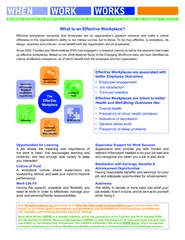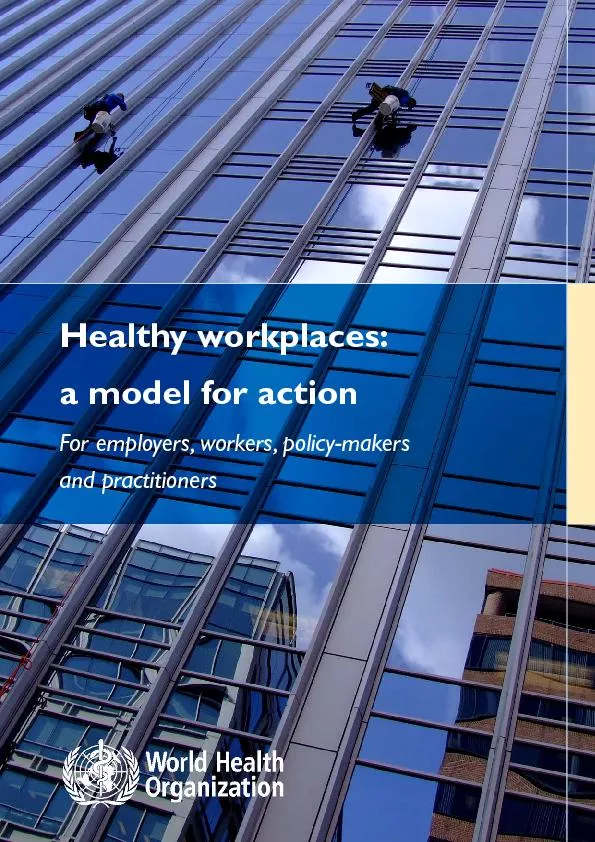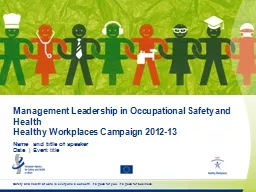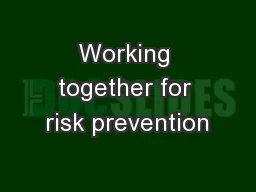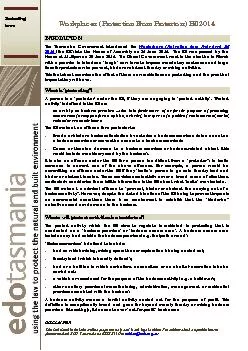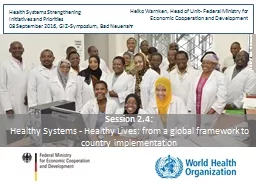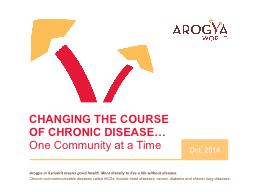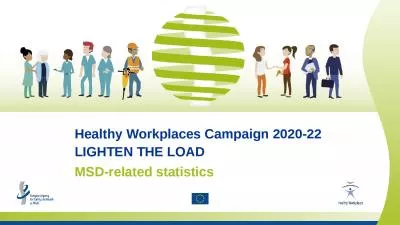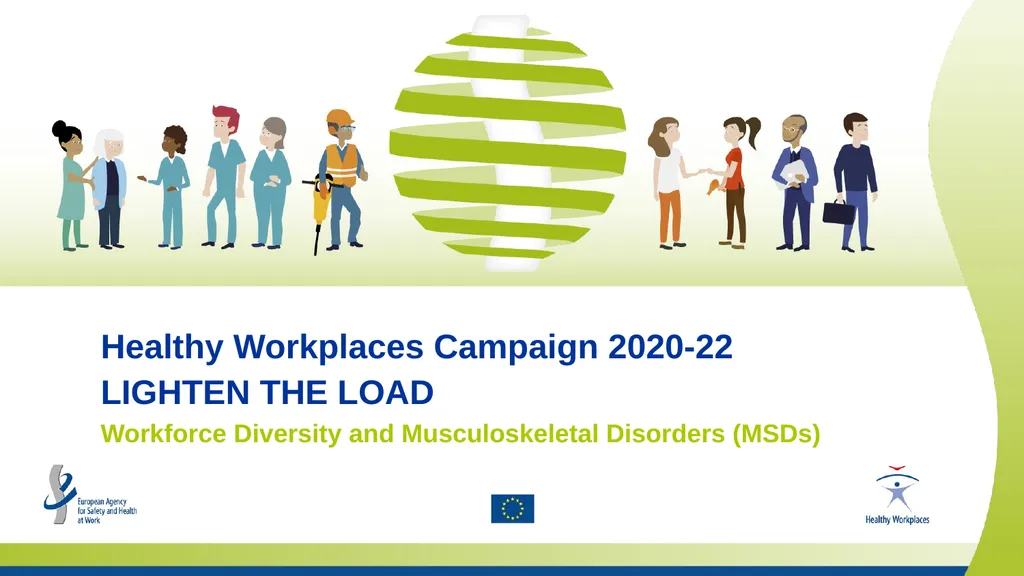
Author : sherrill-nordquist | Published Date : 2025-06-27
Description: Healthy Workplaces Campaign 2020-22 LIGHTEN THE LOAD Workforce Diversity and Musculoskeletal Disorders (MSDs) Introduction: Workforce diversity and MSD-related risks Definitions Exposure to work-related health risk factors Prevalence ofDownload Presentation The PPT/PDF document "" is the property of its rightful owner. Permission is granted to download and print the materials on this website for personal, non-commercial use only, and to display it on your personal computer provided you do not modify the materials and that you retain all copyright notices contained in the materials. By downloading content from our website, you accept the terms of this agreement.
Here is the link to download the presentation.
"Healthy Workplaces Campaign 2020-22 LIGHTEN THE"The content belongs to its owner. You may download and print it for personal use, without modification, and keep all copyright notices. By downloading, you agree to these terms.

